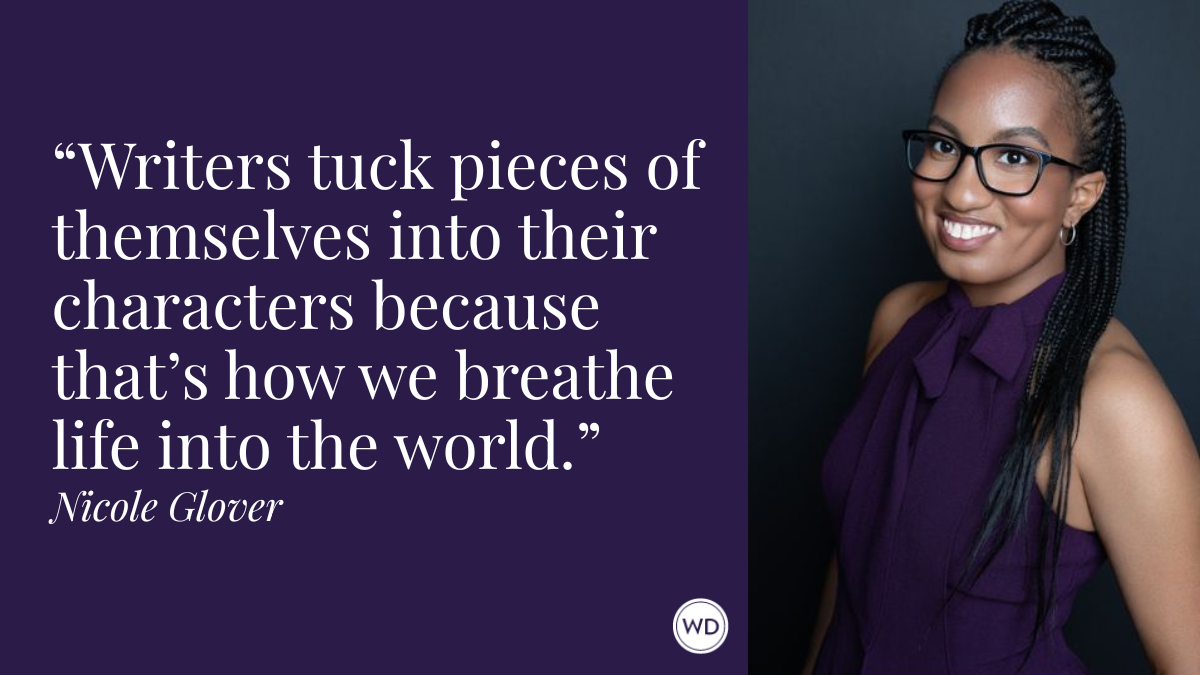Third-Person Limited: Analyzing Fiction’s Most Flexible Point of View
From fast-paced action to intimate drama, third-person limited POV can be adapted to any scene or situation.
Let’s start with a flashback.
When my story was up for discussion in my first-ever writing class, our lanky, mustachioed instructor inhaled deeply and peered out at us. His eye glinting mischievously, he asked, “What is the point of view in this piece?” I rolled my eyes. Third-person, thank you very much! Who wouldn’t know that? “Third … limited?” one of my peers ventured.
The instructor frowned, drew a deep breath, then said, “Well, look at the fourth paragraph.” Two-dozen heads tilted down toward their printouts. “The POV drifts,” he explained. “Is it omniscient?”
Silence. I was already lost. Limited? Drifting?
As it turned out, not understanding these terms was pretty seriously hindering my storytelling potential. Like many people, I assumed third person was just the point of view where you write “he” and “she” instead of “I,” without understanding the nuances. This is like classifying all wheeled vehicles—from bicycle to big rig—under the category of “car” as opposed to “feet.”
I didn’t fully understand third-person limited (TPL) point of view for a long time, and certainly didn’t understand why an author would choose to be “limited” in this way. Isn’t limitation generally an undesirable thing? Before that discussion, I’d received about 1,000 consecutive rejections—from literary magazines, agents and editors. But since figuring this whole POV thing out, most of my writing has been published. It’s not a coincidence.
TPL is a remarkably flexible and powerful approach to narration. As needed, you can move in close and pull away from your POV character. In the process, conflicts and characters, and setting—almost everything—become clearer and more vivid.
IndieBound | Bookshop | Amazon
[WD uses affiliate links.]
Third-Person What?
First, because even a writing professor such as myself needs a reminder from time to time, here’s a refresher on the primary types of third-person narration:
OMNISCIENT. The preferred narrative approach in classic literature. The narrator is all-knowing, allowing the writer to enter the minds of anyone they want. Examples of omniscient narration include the works of Charles Dickens, but also some contemporary novels like Celeste Ng’s Everything I Never Told You.
CINEMATIC. The author describes events as impartially as possible, as if just a camera on the wall. The reader can’t “hear” character’s thoughts. Think Ernest Hemingway and Raymond Carver. Beginning writers often start here because it looks easy. (It’s not.)
LIMITED. As the name suggests, the narrative is limited to a single person’s perspective. This is the most prevalent approach in literature since the early 20th century. If the character doesn’t know something, the reader can’t know it. Examples are boundless, but include everything from the Harry Potter books to J.M. Coetzee’s Disgrace.
SHIFTING LIMITED OR MULTIPLE LIMITED. In many books—including both of mine—the third-person narrator is restricted to one character’s perspective through the entirety of the novel. But in shifting or multiple limited, the point of view changes from chapter to chapter (or is divided by section, or in some other easily definable chunks). Examples of shifting limited POV include West of Here by Jonathan Evison (which employs nearly 50 different points of view) and R.O. Kwon’s The Incendiaries.
Your Limitation Is Your Strength
When a short story or novel is written from one character’s POV, readers build rapport with that character. We see the world through their eyes, feeling their grief, joy or even cynicism.
In that respect, yes, third-person limited is much like first-person POV, but with the crucial distinction that readers aren’t completely trapped within that character’s perspective. The ability to convey a character’s thoughts—and then back away when you’d like to mute their thoughts—is a critical difference from first person. The narrator can sit on the protagonist’s shoulder for some parts of the story, then back away for other parts. Early in a book, employing a very close stance can help readers understand the character’s inner workings. As the book progresses, readers will come to know them so well they can probably predict their thoughts, and thus that close proximity isn’t as necessary.
When the plot is moving quickly, or to compress time, it makes sense to assume a more distant perspective, much like the cinematic POV. Moments of high drama and physical violence (also sports and sex, for that matter) are typically best served at a more removed viewpoint— helping readers understand unfolding events.
This perspective gives you, as an author, flexibility. In The Punishment She Deserves, Elizabeth George uses a close TPL perspective to evoke the turmoil of a young woman’s acute psychological crisis. Later in the book, George uses a distant POV during the climactic chase scene, as the detectives pursue their main suspect.
Limitation can increase suspense. If you can’t see outside of a character’s perspective, then the reader doesn’t know what’s around the corner or whether the character can trust other people. And if the POV character trusts someone that the reader worries might be dishonest, that can be an excellent tension-builder.
A Favorite Example
The brilliant short story “Intervention” by Jill McCorkle does a terrific job of demonstrating the power of close third-person narration, as in the following paragraph:
The intervention is not Marilyn’s idea but it might as well be. She is the one who has talked too much. And she has agreed to go along with it, nodding and murmuring “all right” into the receiver while Sid dozes in front of the evening news. Things are so horrible all over the world that it makes them feel lucky just to be alive. Sid is 65. He is retired. He is disappearing before her very eyes.
From this selection, we can see a handful of sentences doing significant heavy lifting:
- Here, “… it might as well be … she is the one who has talked too much,” Marilyn feels she’s set in motion this intervention and regrets it.
- She murmurs “all right” into the receiver as Sid sleeps; presumably he can’t deduce the plans being made while he’s asleep, yet she’s still careful with her words.
- In saying, “Things are so horrible all over the world that it makes them feel lucky,” the word “them” demonstrates that Marilyn still feels a closeness with Sid, and that they often share the same worldview.
- With the sentence, “He is disappearing before her very eyes,” we see Marilyn feels there’s something wrong with Sid. When coupled with the word “intervention,” we gather Sid is an alcoholic.
The word “feel” appears only once: “They feel lucky just to be alive.” All the other emotional content is communicated by implication: Marilyn’s guilt and sense of responsibility, her concern about her beloved husband Sid’s drinking problem, and her accidental (or half-accidental) instigation of secret plans for an alcoholism intervention— as well as the fact that she regrets setting these plans in motion. The internal conflict and apprehension are cemented, drawing readers in.
If McCorkle had tried to do this in cinematic-third POV, the paragraph would be painfully blunt:
Marilyn regrets telling her daughter that Sid—Marilyn’s husband, her daughter’s father—has been drinking too much. Now her daughter has called her on the phone to say that she wants to stage an intervention. On the phone with her daughter, Marilyn is nodding and murmuring “all right” into the receiver while Sid dozes in front of the evening news, which is full of bad news from all over the world. Sid is 65.
How to Do It
Writing in third-person limited is surprisingly difficult. It’s a technique that requires close observation, practice and a willingness to rigorously rework sentences. I teach the approach in my MFA classes and with my clients as a writing coach. We struggle through it together.
Most commonly, writers seem to create richly drawn perspective for the characters they most easily identify with, but the POV becomes distant when switching to a character they feel is difficult or unappealing, or whose life experiences are totally dissimilar to their own. Readers don’t hear the ungainly character’s thoughts or get any of that complex, multi-layered writing, as in McCorkle’s story.
If you’re going to be close to your POV character, you need to completely understand their inner life, from their amount of self-awareness (or lack thereof) to how they see a sunset. It’s a lot like method acting.
In a 2016 op-ed for The New York Times, author Kaitlyn Greenidge described how she struggled in her novel We Love You, Charlie Freeman to write a subtly racist character in a way that felt convincing. She finally realized, with dread, that she would have to “love this monster into existence.”
Build your own experience with TPL by rewriting scenes in different perspectives, being keenly aware of the distinctions between each. Here’s an example of the same scene rendered three times, starting with omniscient third:
Tom, who owned the general store, was superficial and sexist, and he thought Mildred, a cheerful old lady who came into the store every day, was loud and unattractive.
With third-person limited, we want to ensure that the character’s beliefs are reflected in the narrator’s description of things. Not by necessarily telling us what the character thinks, but by coloring in their fictional world—setting, people, events—with the character’s perspective, informing the words selected. Here is the same scene rendered from Tom’s close-limited perspective:
Mildred burst into the store, braying hellos to everyone and brandishing her stained dentures in a crooked grin. Tom looked away, admiring the sleek new light fixtures he’d installed over the deli.
One of the biggest challenges in writing this way is that readers might end up thinking that the perspective being asserted here is the author’s, not the character’s—which can be unfortunate, especially if your POV character is someone as unpleasant as Tom. There’s little to be done to mitigate this, and if the author tries to wink knowingly at the reader, the spell may be broken. It is something to bear in mind if you’re hoping to spend a whole story on the shoulder of such a character.
Here’s the same situation described from the point of view of Lilly, a young woman who works at the deli in the general store.
The door opened. Lilly looked up through the glass of the deli counter, which she was doing her best to clean to Tom’s exacting standards—and grinned to herself at the irresistible enthusiasm of Mildred, that chatty old lady whose arrival was one of the bright spots of every morning at the store.
Quoted Thoughts
Another way to put TPL into practice is by revising sentences where thoughts and statements are doing a lot of work. Moving emphasis to internalized view is called “free indirect speech.” For example, take this passage:
“I need you to pick up this room,” Teresa said to her sick daughter, who was gazing at her phone. As she looked around the dark room, she thought to herself, These tissues and dirty dishes are disgusting!
To get closer to free indirect speech, remove the quotes and thought tags—this will increase the emphasis on an internalized view:
Teresa’s daughter still hadn’t picked up the room. Disgusting, balled up tissues and empty plates and glasses were everywhere. Teresa glared at her on the sofa, at the girl’s puffy eyes and red-rimmed nostrils. Morgan was staring at her phone. Again.
As you can see, you don’t have to actually quote Teresa’s thoughts. We know exactly what she thinks if you get close enough.
The more time you spend with this point of view, the more you see the sentences beginning to do several jobs at once, layering meanings between the lines. This is what is so magical about third-person limited—readers don’t even see the sleight of hand, but find themselves immersed in the world of your design.
Peter Mountford is a popular writing coach and developmental editor. Author of two award-winning novels, A Young Man’s Guide to Late Capitalism and The Dismal Science, his essays and short fiction have appeared in The Paris Review, The New York Times (Modern Love), The Atlantic, The Sun, Granta, and elsewhere. For more information, please see: https://www.mountfordwriting.com/









